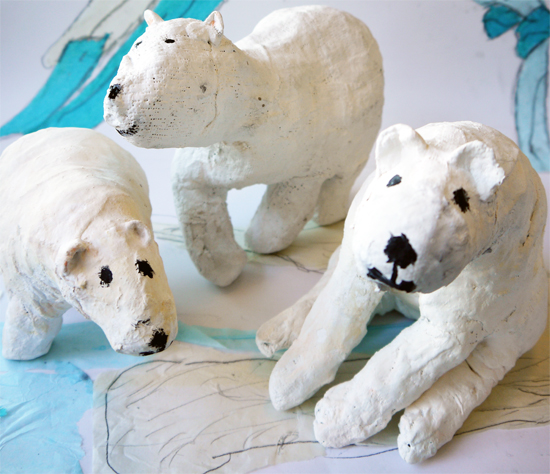Pathway: Using Art To Explore Global Issues
Pathway for Years 5 & 6
Disciplines:
Sculpture, Painting, Drawing, Collage, Sketchbooks
Key Concepts:
-
That art can help us focus on, and explore, big issues. By looking at the artwork of others, and by making our own artwork, we can feel empowered to explore topics which might otherwise be overwhelming to us.
-
That by working alongside others on a similar project we can feel a shared sense of purpose. We can feel supported and understood.
-
That we can bring many disciplines together (including drawing, painting and sculpture) into one artwork.
In this pathway children are enabled to begin to recognise that they are able to make an individual creative response which will be different to that of their peers, but one which comes from the same starting point and share a similar message. They learn that all artwork, however it is made and by whom, will be valued, and that each piece can contribute to a larger shared artwork.
As children progress through the school, they are enabled to use and further develop the knowledge and skills learnt so far, and bring their personal likes, dislikes and experience to a project, working towards being confident creative decision makers.
By using a variety of media and techniques, all children are enabled to explore and succeed.
The projects featured centre around an exploration of global warming and ice worlds, but this pathway can easily be adapted to explore other global issues such as deforestation or weather patterns. Change your source material accordingly.
Try to make sure you leave time at the end of the project for a discussion over the global issue to emerge, based upon the artwork.
Theme: Climate change, Landscape, Habitats, Animals
Medium:
Drawing Materials, Modelling Materials (incl. Modroc)
Artists: Faith Bebbington, Frances Hatch, NOMINT
If you use this resource in your setting, please tag us on social media: #InspiredBy @accessart (facebook, twitter) @accessart.org.uk (instagram) and share the url. Thank you!

Additional Pathway
This pathway is an additional pathway to help you extend, develop or further personalise the AccessArt Primary Art Curriculum.
We suggest this pathway is used to replace a “Working in 3 Dimensions” (Blue) Pathway or a “Print, Colour, Collage” (Yellow) Pathway.
It works well in replacement of the Set Design (Year 5 & 6) or Activism (Year 5 & 6) Pathway.
Please note the Modroc Polar Bear activities in this pathway are best suited to more confident teachers who are happy with a higher level of interaction with the work, and more able or experienced pupils.
You may also like to use the activities in this pathway with a smaller group of children in an after school club or community context.



Teaching Notes
Find the MTP for this pathway here.
See the recording of the Zoom CPD session Exploring Modroc.
Curriculum Links
Geography: Climate zones, North & South Hemispheres
Science: Animals, Predators/Prey, Environmental changes.
PSHE: Supports Responsibility to the planet, Collaboration, Peer Discussion. Look at foods from different religious ceremonies.
I Can…
-
I have explored the work of artists who use art as a way of drawing attention to global matters, and I can share my responses with the class.
-
I can use my sketchbook to record and reflect how the artist’s work makes me feel.
-
I can use my sketchbook to make drawings, working from still images, videos and from life, demonstrating close looking and drawing. I can use these drawings to inspire my sculpture.
-
I can make a sculpture of an animal, understanding that by working in 3d my sculpture will be seen from different viewpoints.
-
I can explore and experiment using “Design through Making”, and I can discover how I can transform and construct with different materials to make my sculpture.
-
I have seen how my own sculpture can form part of a larger artwork, and how we can all find inspiration in each others’ ideas.
-
I can explore painting and collaging using colour mixing and different surfaces and see how the materials respond to each other. I can create an environment for my sculpture.
-
I can present my work as part of a larger artwork, and I can share my response to my own work and also to the work of my peers.










Adam F
March 31, 2022 @ 9:05 pm
Looking forward to this topic and it ties in nicely with our Year 1 Autumn 1 text.
Paula
April 1, 2022 @ 7:32 am
Good luck and enjoy! we’d love to see any pics 🙂